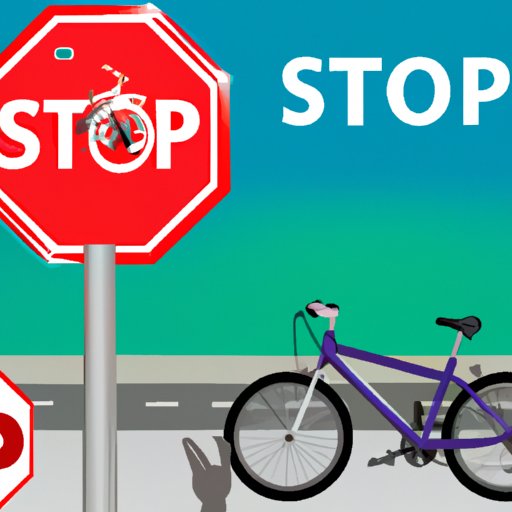Introduction
Bicycles are a popular mode of transportation in many parts of the world. As such, it is important for riders to understand the rules of the road and their responsibilities as cyclists. One of the most common questions regarding bicycle riding is whether or not bicycles must stop at stop signs. In this article, we will explore the legal requirements for bicyclists at stop signs, how to safely approach a stop sign on a bicycle, common misconceptions about rights and obligations, benefits of obeying traffic laws, and the impact of bicycle laws on road safety.

Exploring the Legal Requirements of Bicyclists at Stop Signs
In most jurisdictions, bicycles are considered vehicles and thus must obey the same traffic laws as cars and trucks. This includes stopping at stop signs. However, there are some exceptions. For example, some states have enacted “Idaho stops” which allow bicyclists to slow down and proceed through stop signs without coming to a complete stop, as long as there is no other traffic present. Additionally, some cities have implemented “bicycle boxes” at intersections, which allow bicyclists to pass through stop signs without stopping if they enter the box before any other vehicles. It is important to understand the laws in your area and obey them accordingly.

How to Safely Approach a Stop Sign on a Bicycle
Whether you are required to come to a full stop or just slow down and yield to other traffic, it is important to approach stop signs with caution. Here are some tips for slowing down and stopping safely:
- Slow down well before the stop sign to give yourself time to come to a complete stop if necessary.
- Check for other vehicles, cyclists, and pedestrians before proceeding.
- Use hand signals to indicate your intentions to other riders and drivers.
- Come to a complete stop if required by law.
Common Misconceptions about Bicyclist’s Rights and Obligations at Stop Signs
Despite the fact that bicycles are considered vehicles in most places, there are still some misconceptions about bicyclists’ rights and obligations at stop signs. Some cyclists mistakenly believe that they do not need to stop at stop signs, while others think they can pass through stop signs without yielding to other traffic. It is important to understand the laws in your area and obey them accordingly.
To ensure that you understand the law and obey it, it is a good idea to familiarize yourself with the traffic laws in your area. You can usually find this information online or in the local DMV office. Additionally, it is important to remember that even if the law does not require you to come to a complete stop, it is still a good idea to do so for the safety of yourself and other riders.
Benefits of Obeying Traffic Laws on a Bicycle
Obeying traffic laws on a bicycle has numerous benefits. First, following the rules helps keep everyone safe. When cyclists obey traffic laws, they are less likely to be involved in accidents. Additionally, following the rules of the road demonstrates respect for other riders and drivers, which can help promote positive interactions between cyclists and motorists.
Finally, obeying the law can also help protect cyclists from potential legal repercussions. In some areas, cyclists who are caught breaking the law can face fines or even jail time. By understanding and following the law, cyclists can avoid these potential consequences.

Examining the Impact of Bicycle Laws on Road Safety
The impact of bicycle laws on road safety depends on several factors, including the level of enforcement, the clarity of the law, and the willingness of cyclists to obey the law. To improve bicycle safety on roads, it is important for local governments to invest in enforcement efforts, make the laws clear and easy to understand, and educate cyclists about their rights and obligations.
Understanding the Consequences of Not Stopping at Stop Signs on a Bicycle
Not stopping at stop signs on a bicycle can result in serious consequences, including traffic citations, fines, and even jail time. Additionally, it is important to remember that not stopping at stop signs can put cyclists and other road users in danger. To avoid getting into trouble, it is important to obey the law and follow the rules of the road.
Conclusion
In conclusion, bicycles must abide by the same traffic laws as cars and trucks, including stopping at stop signs. While some exceptions exist, it is important to understand the laws in your area and obey them accordingly. Additionally, following the rules of the road can help keep everyone safe, demonstrate respect for other riders and drivers, and protect cyclists from potential legal repercussions. By understanding the consequences of not stopping at stop signs on a bicycle, cyclists can ensure they remain safe and avoid getting into trouble.


